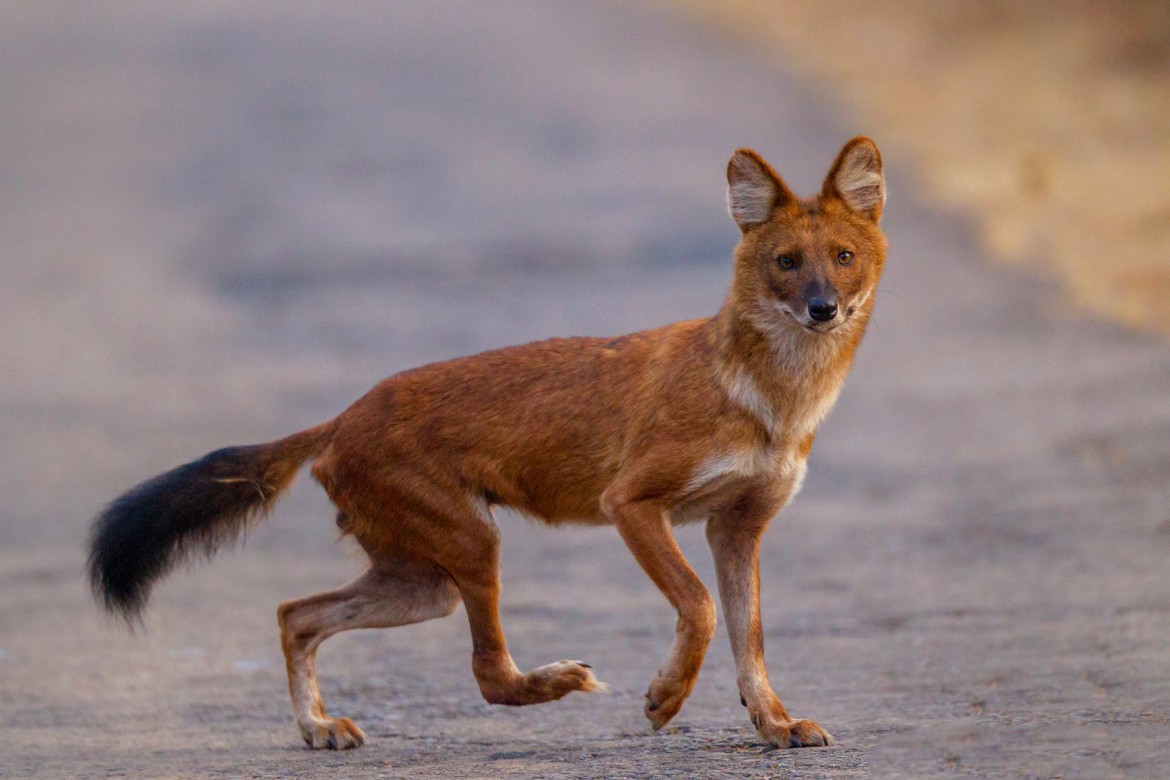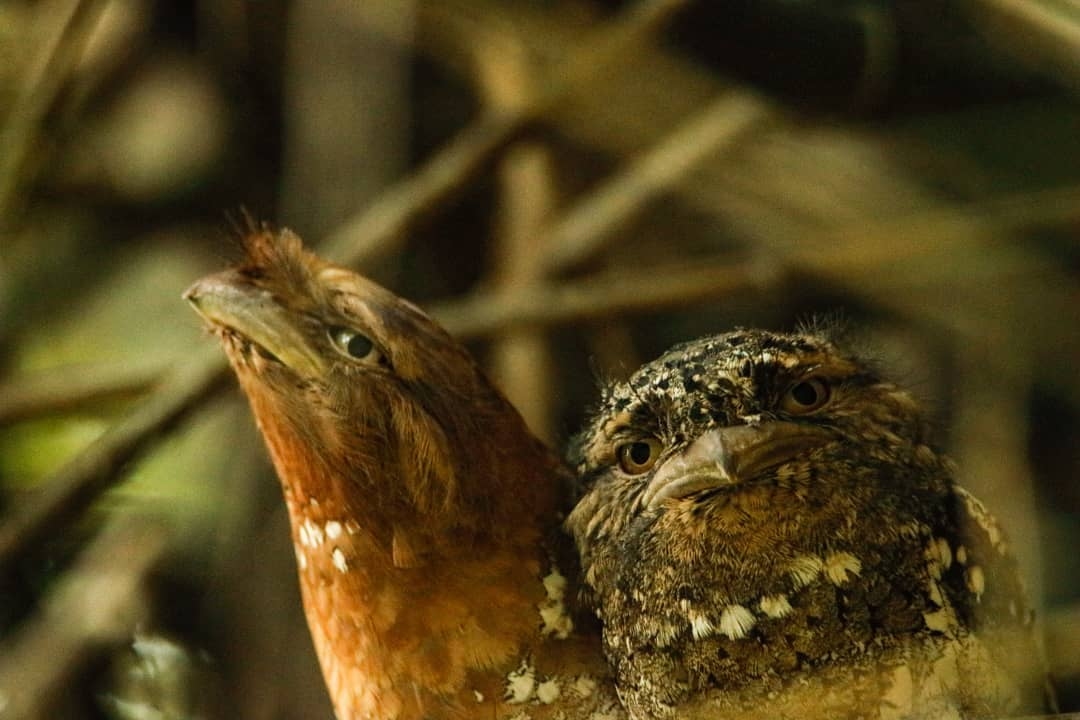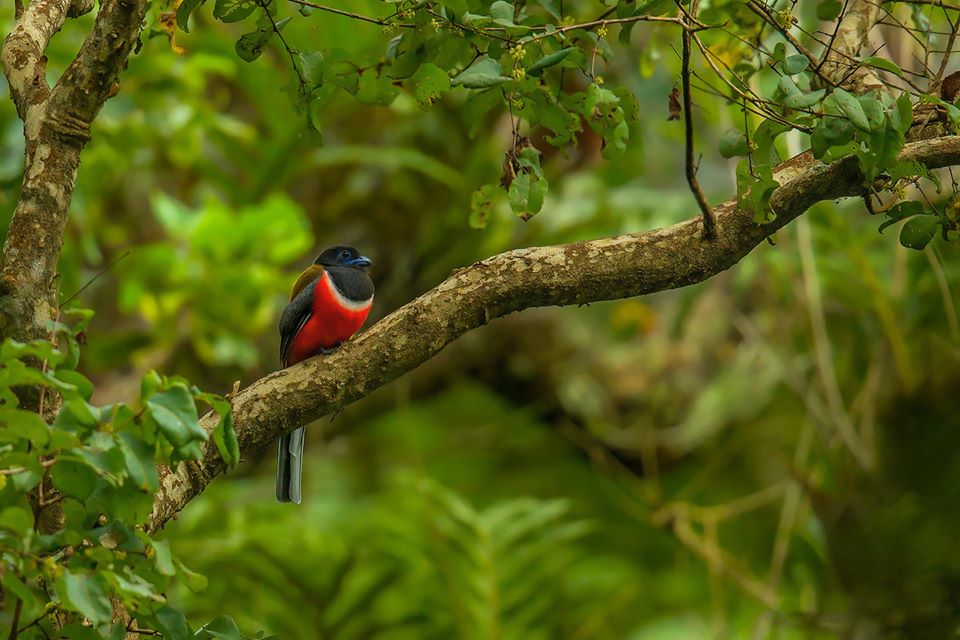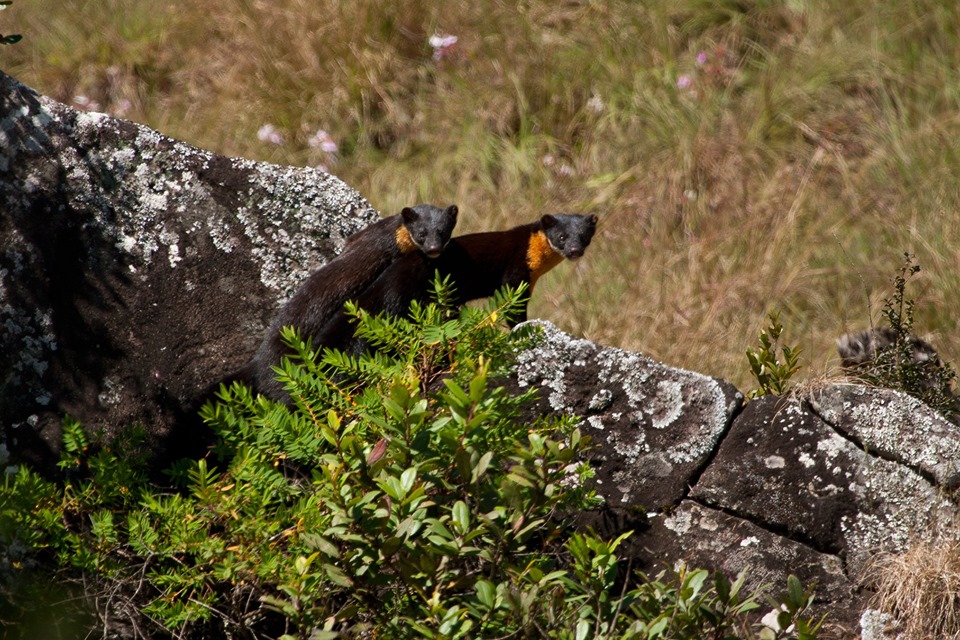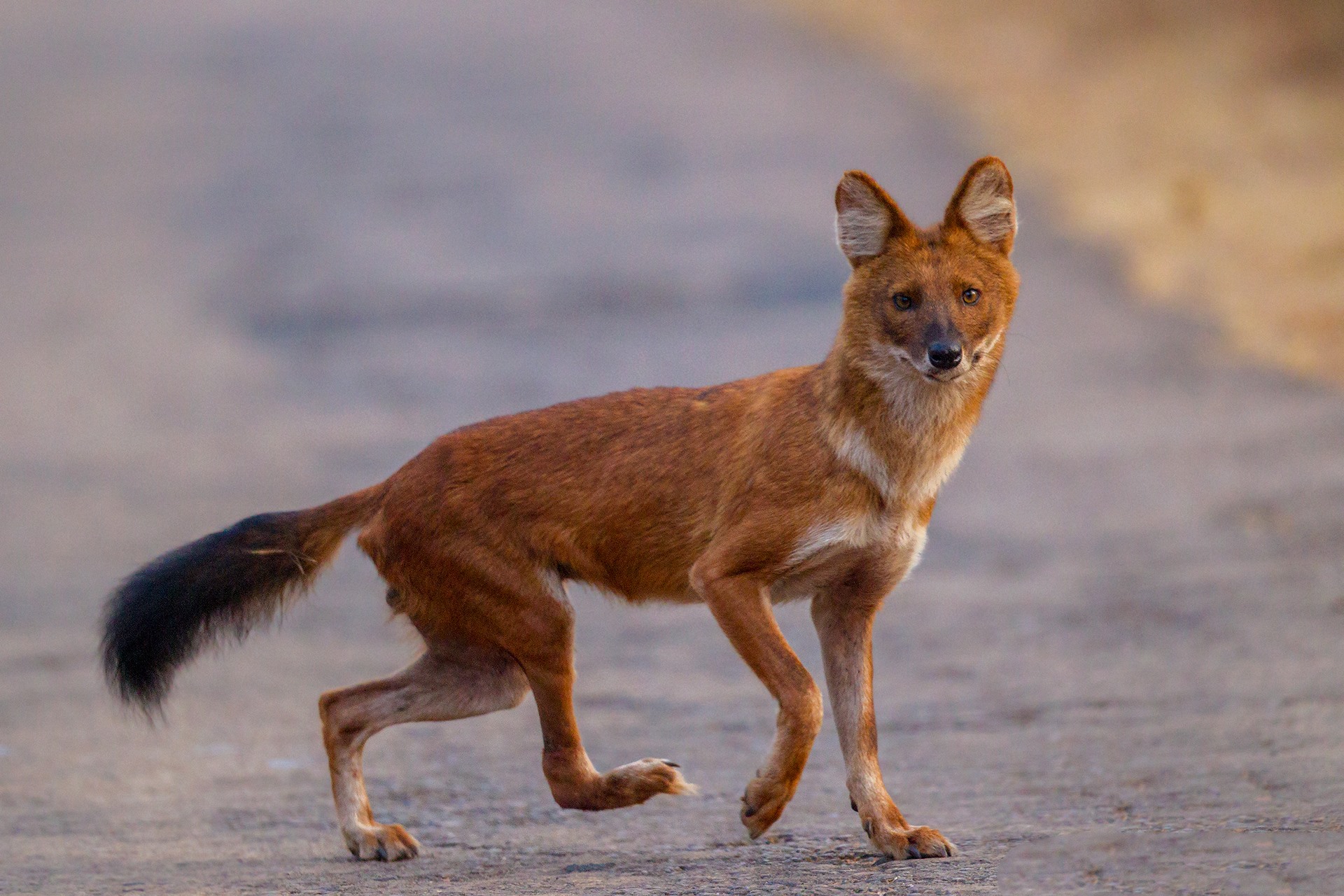Carnivores world over have long captivated the fascination of people. The charismatic charm, and sometimes the fear, associated with iconic species like lions, tigers, jaguars and leopards have often rendered them deeply linked with people, cultures, folklore and religions. One such rare carnivore that roams in the varying, dense forests habitats of the Anamalais is the Asiatic wild dog or the ‘dhole’.

Dholes are among the few carnivore species in the world that live in social groups; they are found in packs with numbers ranging from 2 to 25 individuals. With reddish brown coats and bushy straddling tails, they have mastered the strategic hunting techniques in tropical forests, and have a fascinating social structure. Yet, they have intrigued very few natural historians, biologists and British Indian hunters. Even today, most people confuse them for foxes, jackals, or the friendly neighborhood mongrels.
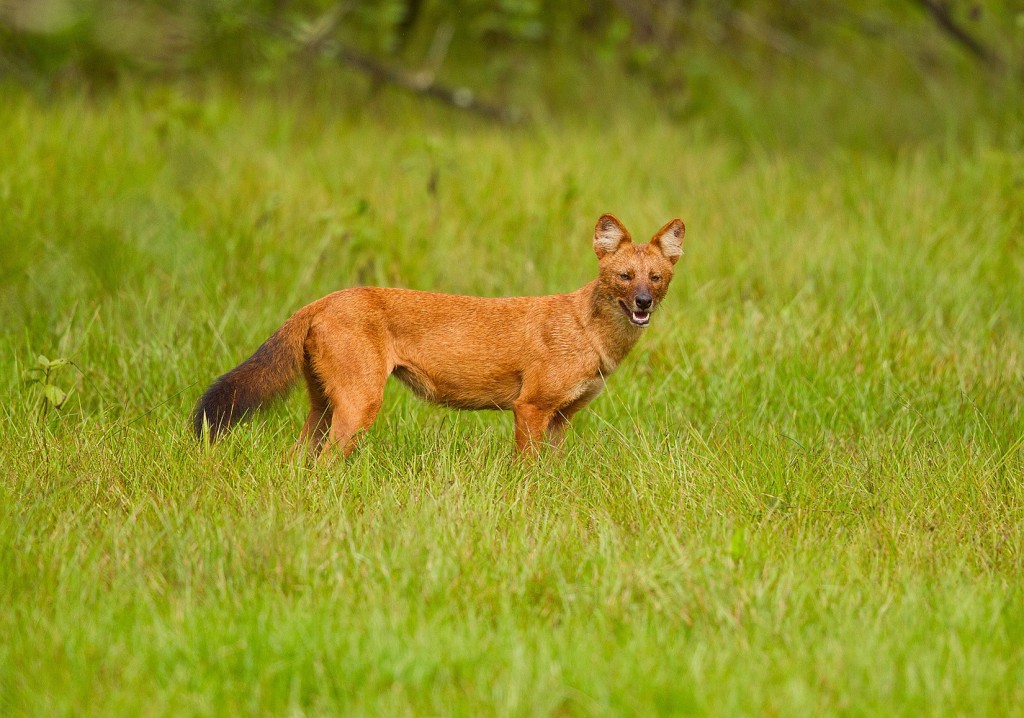
By physical appearance, dholes are not very large; on average they weigh about 20 kilograms and stand at around 20 inches at the shoulder. Historical records of dholes have been few and far between and natural history notes are generally ambiguous or inaccurate. In fact, there is no clear understanding of why the species is called ‘dhole’ in the first place. Some speculations suggest that it is a misnomer of ‘thōla’, the Kannada name for wolf.
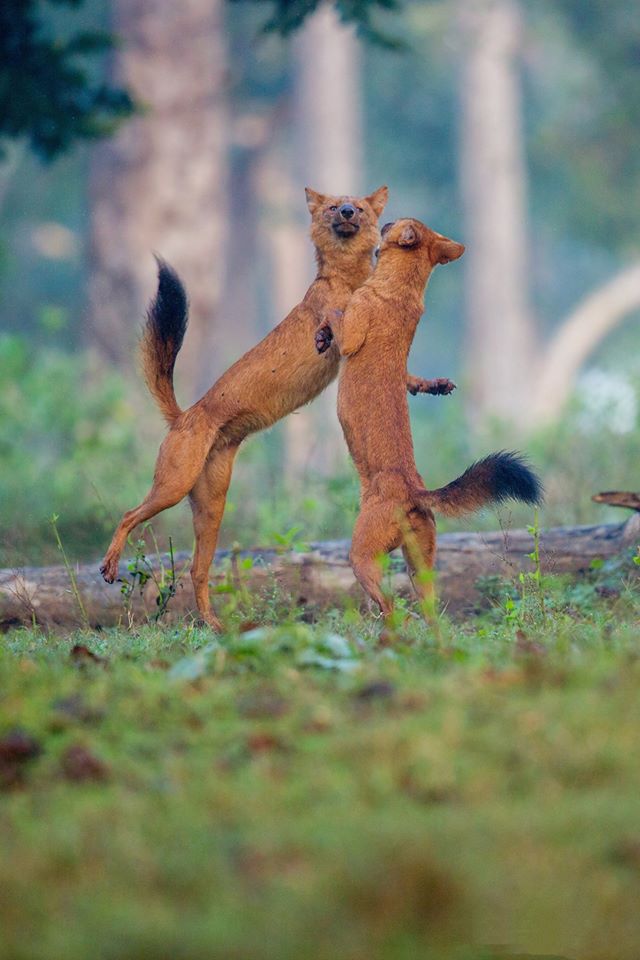
In British India, they were seen as vermin. They were not valuable for their meat nor were they targeted as trophy species. In fact, most historic records present them in a negative light. A quote from renowned game hunter and naturalist Pythian Adams, “Except for his handsome appearance, the wild dog has not a single redeeming feature, and no effort, fair or foul, should be spared to destroy these pests of the jungle” (1949), sums up the general perception of dholes through much of the 19th and 20th centuries. Even Rudyard Kipling paints a gory image of the ‘red dog’ in the Second Jungle Book, personifying dholes as villainous rebels that hunt by the hundreds, willfully defying the law of the jungle. Such wide spread perceptions led to the bounty-hunting of the species until they were brought under strict protection under the landmark Wildlife Protection Act of 1972.
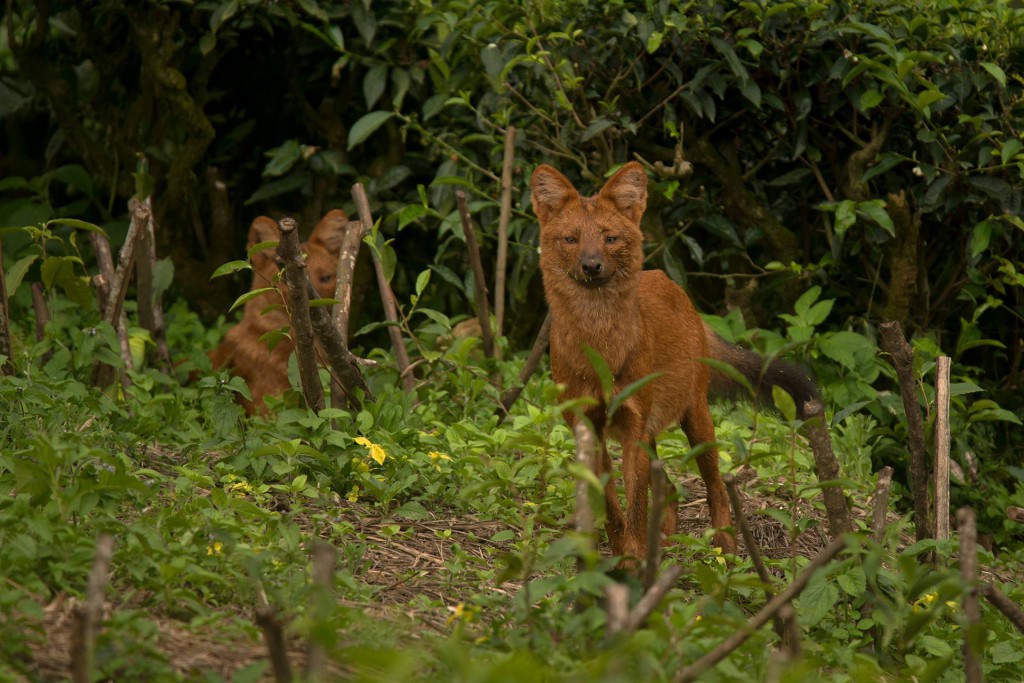
Dholes have the distinction of being among the few forest-dwelling carnivores that live in large social groups. The packs typically consist of an alpha male, alpha female, a host of subordinates, and seasonally, the pups of the alpha pair. Their inherently elusive and secretive nature makes it all the more difficult to observe or study them inside the forest habitats.
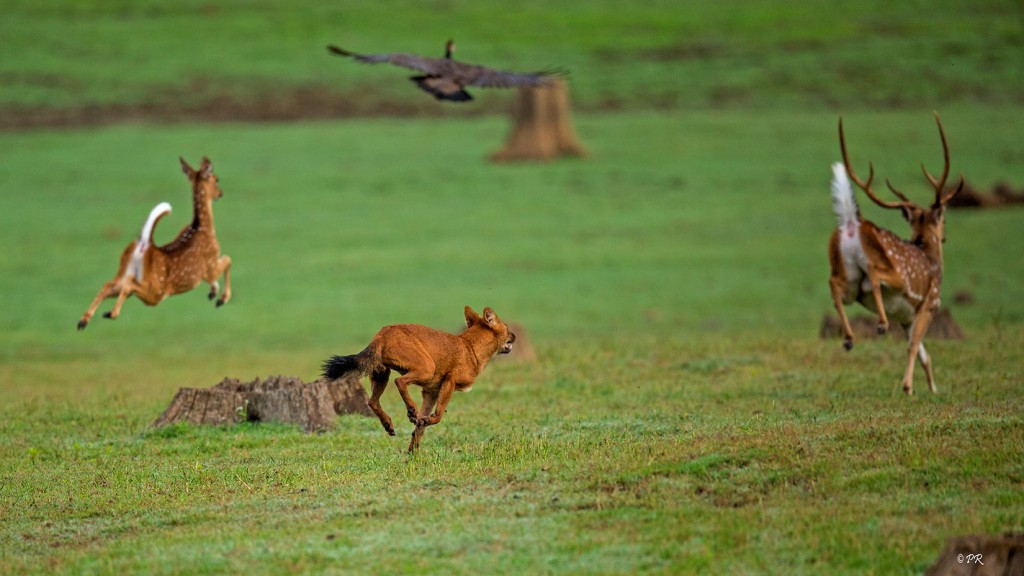
The adults of the pack partake in coordinated hunts in dense forests and manage to bring down prey such as spotted deer, sambar deer and gaurs, which much larger than the dholes themselves. While on such hunts, the pack members communicate with each other through nasal whistles (dholes are also called ‘whistling dogs’ for this reason).
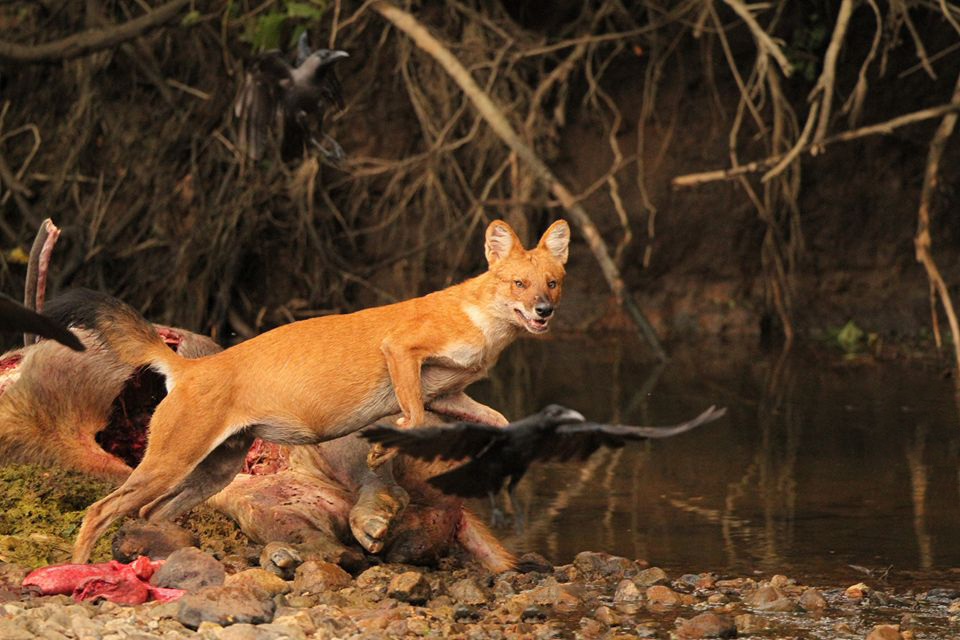
The lack of their jaw strength to deliver a killing bite on the neck or throat of the prey renders them helpless, and oftentimes forces them to consume their quarry while it is still alive. The sight of a pack of yip-yapping snarling dogs eating their prey while it is still alive only adds to their gruesome image.
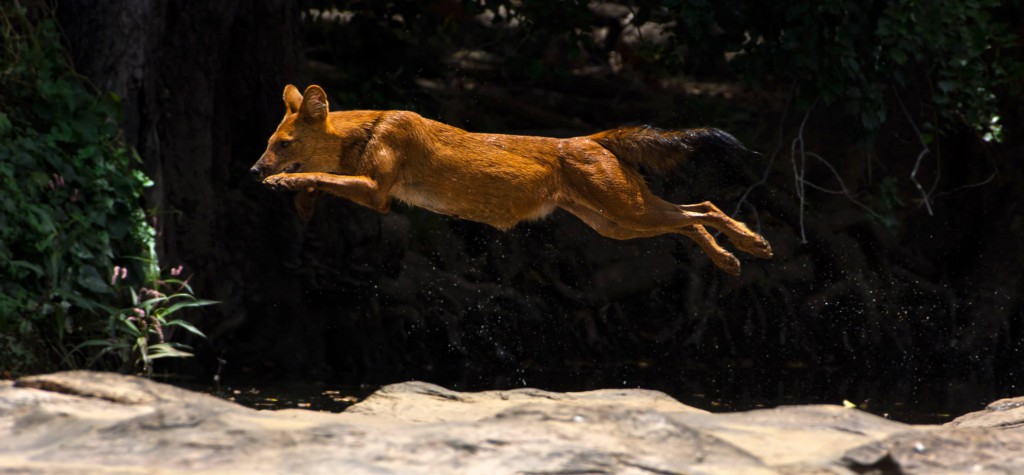
Just like across the most parts where they occur, dholes share space with tigers and leopards here in the Anamalais too. The interplay among the three carnivores, and, the complex mechanisms through which they coexist with each other continues to fascinate carnivore biologists. Despite being an apex predator in forests of South and southeast Asia, dholes have received very little focus in terms of scientific studies and conservation action. India perhaps has the largest dhole population in the world. Yet, there have been few long-term studies that have tried to understand their ecology. With no specific conservation action plans to protect dholes across their range, nature reserves created to conserve the tiger are aiding in their protection.
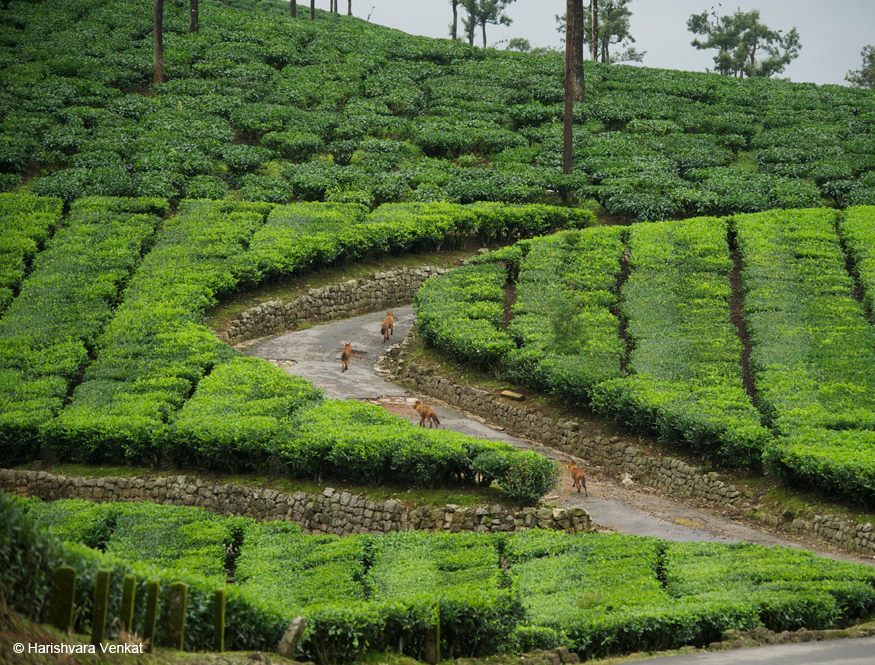
Within India, remnant meta-populations of dholes are mostly restricted to the Western Ghats, Central Indian forests, and few regions in the northeastern states. In the Anamalai Tiger Reserve of the Western Ghats, the forests and adjacent forest plantation landscapes (coffee, tea, etc.) of Valparai, the farm interspersed, buffer forest zones of Sethumadai and the thick, dense deciduous forests of the TopSlip and Chinnar range, support a large dhole population, thereby serving as one of the most important strongholds for the species.
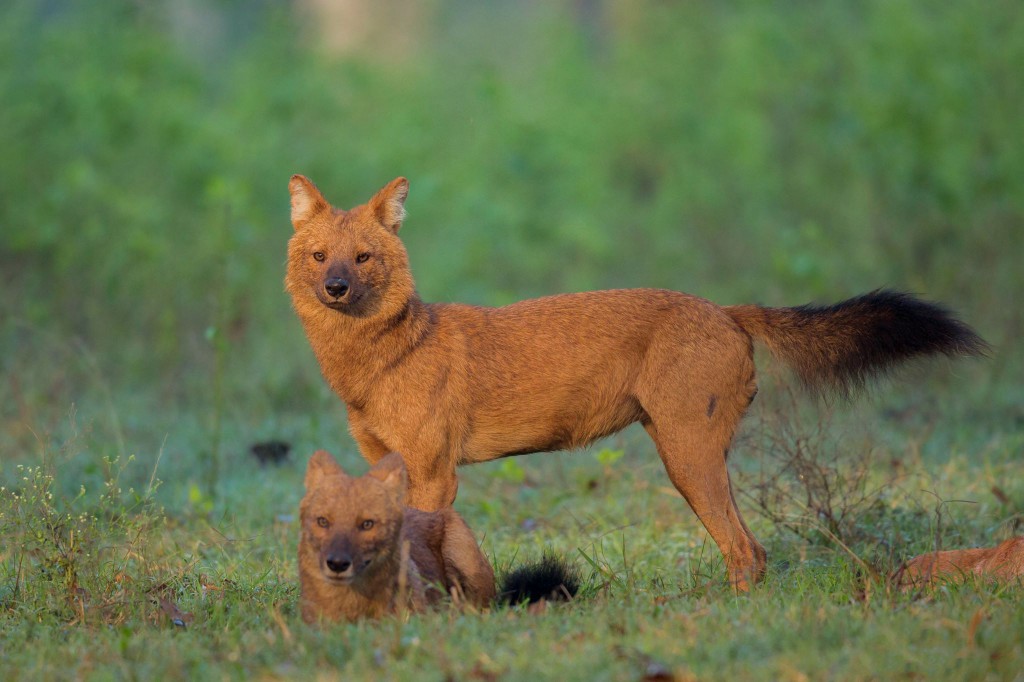
But to save India’s most fascinating and important predators amidst rapid economic growth and consequent infrastructure developments, a more scientific focus on the species, extensive research on their need to persist, and most importantly, dedicated management actions targeted at conserving them, are the need of the hour.

